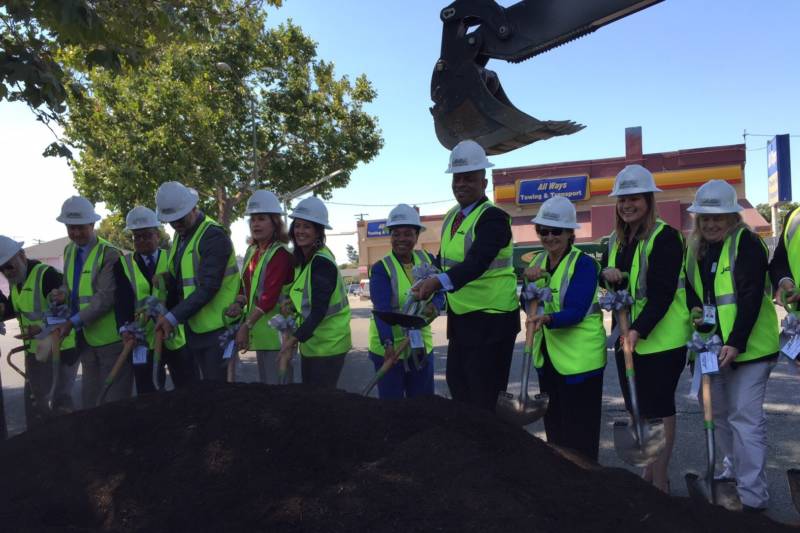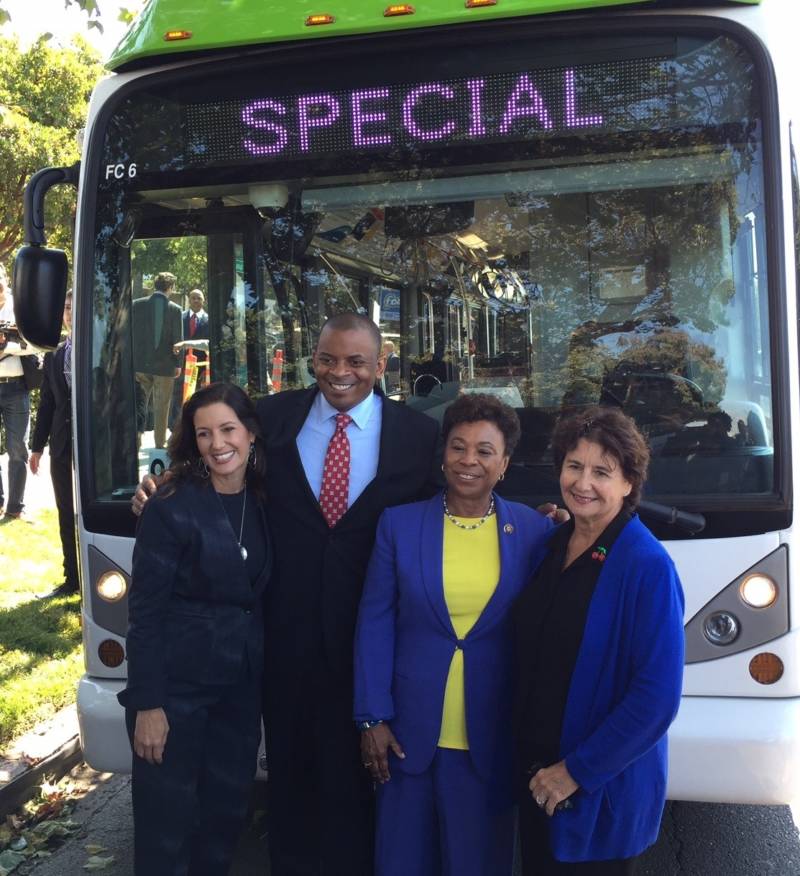East Bay Rep. Barbara Lee and U.S. Transportation Secretary Anthony Foxx joined local leaders at the groundbreaking of the East Bay's first bus rapid transit line on Friday.
Foxx called BRT, which will stretch 9.5 miles from downtown Oakland to San Leandro, a "remarkable" project, especially considering the challenges in 21st century transportation planning like population growth, climate change and new technology.
"When you deploy this bus rapid transit, it is a connector, it is a lifeline, it is a job creator," he said. "It is a system that is going to radically change the quality of life for so many."
BRT will include 12 curbside stations and 21 center median stations primarily along International Boulevard and East 14th Street. Transit officials say a new dedicated BRT bus-only lane and green-light priority for BRT buses will allow them to operate at least every seven minutes during peak hours.

"BRT is going to serve some of our most diverse and low-income neighborhoods," Oakland Mayor Libby Schaaf said. "East Oakland residents now know they have reliable and affordable transportation to our region's job centers and education institutions."
